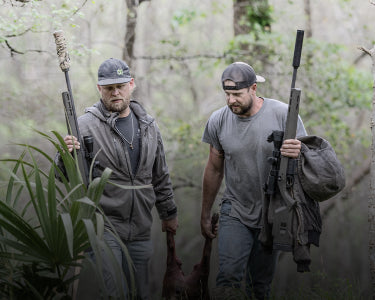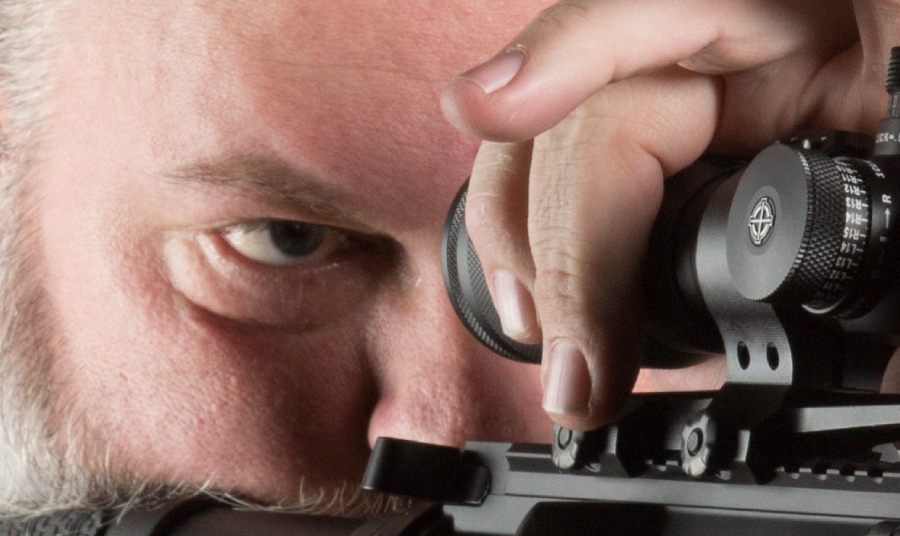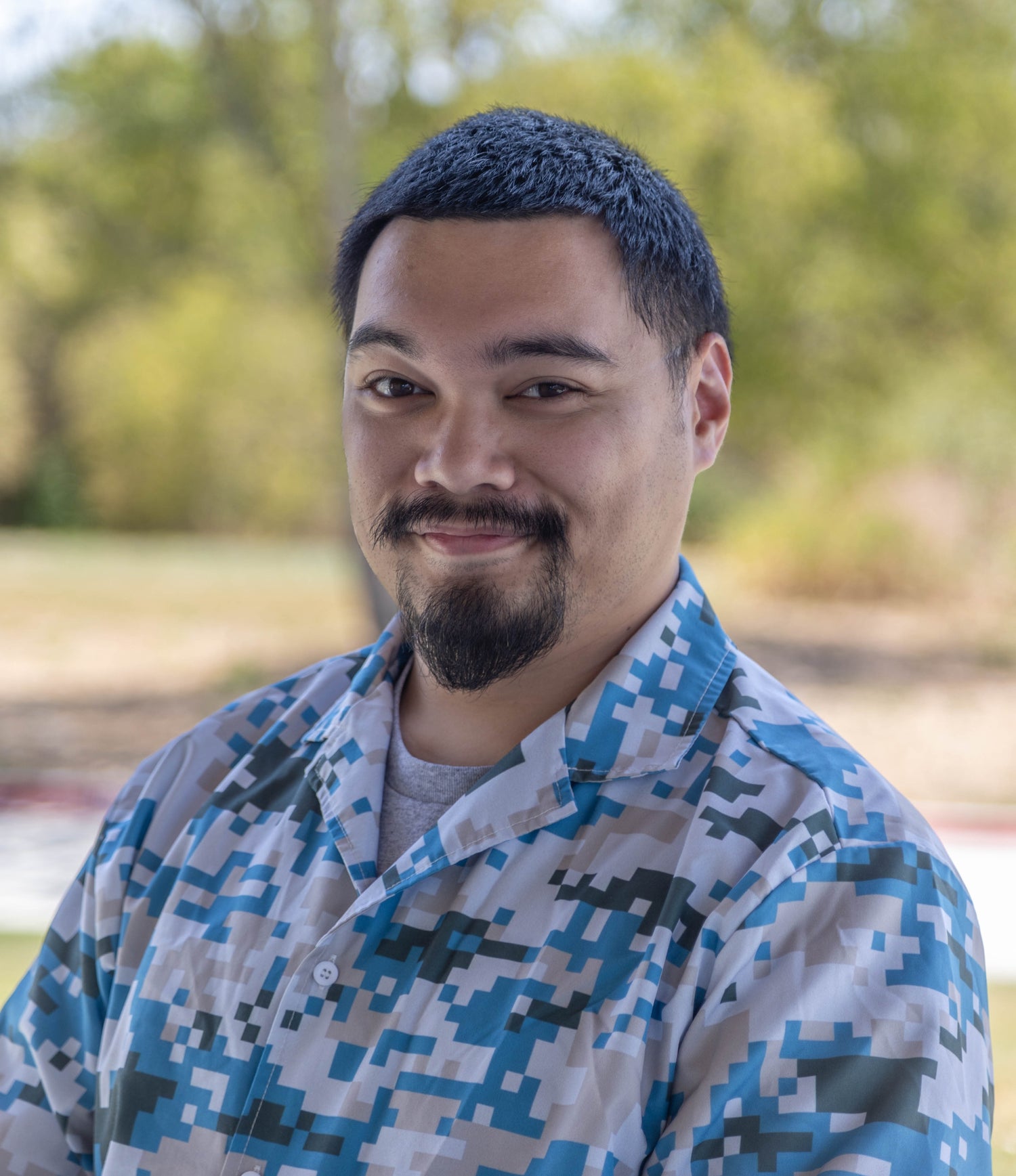When it comes to rifle shooting, there's an ongoing debate about whether it's better to shoot with both eyes open or just one. While it cannot be denied that it is ultimately a matter of personal preference, it involves critical considerations about situational awareness, target acquisition, and shooting accuracy. Both techniques have their advocates, and each offers distinct advantages, especially in the context of shooting with riflescopes, which are designed to enhance precision and clarity.
Why Shoot with Both Eyes Open?
One of the primary arguments for keeping both eyes open while shooting is better situational awareness. By using both eyes, shooters can maintain a full field of view, which is crucial in dynamic environments where threats or targets can appear unexpectedly. This wider perspective can be particularly advantageous for those who are engaging in activities such as hunting or tactical operations.
For those rare individuals who have a dominant hand different from their dominant eye, shooting with both eyes open can simplify the alignment process. This method allows for a more natural shooting posture and can help in aligning the sight more comfortably and accurately.
When engaging moving targets, having both eyes open is particularly beneficial. It allows for better depth perception and a wider field of view, which makes tracking and adjusting for a moving target much easier.
Another significant benefit is that it can reduce eye fatigue. When you shoot with only one eye open, the other eye strains to stay closed, which can lead to discomfort over time. Interestingly, back during the late 80s, the US Marine Corps had a unique approach to this issue. Some units gave troops the option to qualify with an eyepatch over their non-dominant eye. This allowed shooters to keep one eye focused on the target without the strain associated with closing one eye, thereby reducing fatigue. It also helped shooters who were cross-eye dominant; right handed people who favored their left eyes or vice versa. Likewise, some Olympic shooters and archers use glasses with only one lens or flip-on eye patches for the same purpose.
The Case for One Eye Closed
On the other hand, many shooters find it more natural to shoot with only one eye open. This method is often preferred for long-range shooting because it helps the shooter focus more precisely on distant targets. Closing one eye can eliminate distractions from the peripheral vision and make it easier to concentrate solely on the target and the reticle.
Using a riflescope with one eye open can also enhance the shooter’s ability to focus on the reticle. Having a clear, unobstructed view of one’s reticle is crucial for accuracy, especially over long distances.
Many people instinctively find it easier to shoot with one eye closed because it filters out unnecessary visual information from the non-dominant eye. This simplification can be particularly helpful when the shooter is using their non-dominant hand, as it allows for a clearer focus and better target acquisition.
How Riflescopes Support Both Techniques
With magnification and precision aiming capabilities, riflescopes can complement both techniques in different ways. When shooting with both eyes open, the scope’s magnified image is superimposed over the real-world view from the other eye, providing a blend of magnification and situational awareness. This technique can be particularly effective in close to mid-range engagements where rapid target acquisition is crucial.
Conversely, using a riflescope with one eye open can provide a more controlled and focused shooting experience. The scope's reticle becomes the central point of attention, allowing the shooter to make precise adjustments and accurate shots at longer distances. This method is favored in precision shooting disciplines, such as benchrest shooting or long-range hunting.
LPVOs: Ideal for Both Eyes Open Shooting
Among the many types of riflescopes, the LPVO (Low Power Variable Optic) stands out for its versatility. One of the key benefits of an LPVO is its 1x base magnification, which is ideal for shooting with both eyes open. At this magnification, the optic functions much like a red dot sight, allowing for quick target acquisition and maintaining excellent situational awareness. This is particularly advantageous in dynamic environments where shooters need to keep an eye on their surroundings while still being able to engage targets rapidly.
Moreover, LPVOs such as the Presidio 1-6x24 offer the ability to dial up the magnification for longer-range shots. This dual capability means that shooters can seamlessly transition from close-quarters engagements to precise long-distance shooting without switching optics. The higher magnification settings provide clear, detailed views of distant targets, making it easier to place accurate shots at range, where some shooters may choose to make with one eye closed. This flexibility makes LPVOs a popular choice among those who require a broad range of engagement capabilities in a single, convenient package.
Choosing What Works for You
Ultimately, the choice between shooting with both eyes open or one eye closed depends on the shooter’s specific needs and preferences. Both methods have their unique advantages, and with practice, shooters can determine which technique offers the best combination of comfort, accuracy, and situational awareness for their particular shooting scenarios.
Frequently Asked Questions
What are the advantages of shooting with both eyes open?
Shooting with both eyes open can provide better situational awareness, improved depth perception, reduced eye fatigue, and a more natural alignment process for those with a dominant hand different from their dominant eye.
In what situations is shooting with both eyes open particularly beneficial?
Shooting with both eyes open is particularly advantageous in dynamic environments, when engaging moving targets, and for individuals who are cross-eye dominant.
Why do some shooters prefer shooting with only one eye open?
Shooting with one eye open can help shooters focus more precisely on distant targets, eliminate distractions from peripheral vision, and enhance the ability to concentrate solely on the target and reticle.
How can shooting with one eye closed benefit long-range shooting?
Shooting with one eye closed can simplify the visual information input, making it easier to focus on the reticle and the target, especially over long distances.
What method did the US Marine Corps use in the late 80s to address eye fatigue while shooting?
Some units in the US Marine Corps allowed troops to qualify with an eyepatch over their non-dominant eye to reduce eye strain associated with closing one eye. This method helped reduce fatigue and was beneficial for cross-eye dominant shooters.




